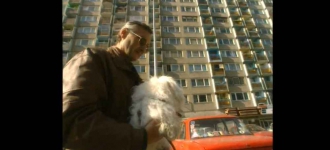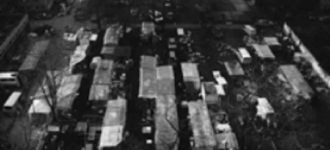A selection of film portraits of Budapest from the past 50 years
From the beginning, the history of cities, films, and documentaries have been intertwined everywhere in the world, even in Budapest. The city film is a separate category in film history, be it experimental works, documentary or even fiction. The first Hungarian film recordings were taken in 1896, in Budapest, during millennium celebrations. Modernity, technology, the city’s identity, and national history and identity were beautifully and spectacularly connected. The Monarchy, Hungary, Budapest – the company is French (an invention of the Lumière brothers), the cameraman is Hungarian, the technology is a world patent that brought the world to Budapest, and in return, took images of Budapest to places across the globe.
On the 150th anniversary of the unification of Pest, Buda and Óbuda into the city of Budapest, we do not need a lengthy explanation as to why it is worth talking about Budapest and its films, or more specifically, about watching documentaries depicting Budapest. This short section – the English title of which refers to a documentary by the recently deceased, creative and amazing French filmmaker, Agnès Varda – consists of a selection of documentary portraits of Budapest from the last 50 years.
Budapest, Why I Love It – is a selection of shorts by István Szabó. Hungarian films and filmmakers have always given us unique visions of Hungary and Budapest. István Szabó’s Budapest evokes the atmosphere of the inner courtyards of tenement houses, ancient shop windows, and memories of bourgeois life. Miklós Jancsó’s Budapest, with images of Heroes’ Square and the Chain Bridge, interlinks music and history. István Gaál and Sándor Sára capture the Tisza River, while Béla Tarr’s films explore the Great Plain. All are outstanding elements of Hungarian cultural history.
Budapest – what I see in it. Budapest – the reason I love it. These are the catchphrases of this selection. István Szabó’s film etudes simultaneously commemorate the bourgeois Budapest of yore and the 1970s, worlds composed of light and shadow, battered relics and warm colors.
Complementing Szabó’s films, the other works present the places and remembered images of Budapest following the fall of state socialism. An experimental etude by György Durst and István Komár, Freeport, builds its own (memory) world on the words of Zoltán Kőrösi and a montage of images filmed from moving vehicles. It uses the island of Csepel as a focal point, followed by rushing images from Budapest in the second half of the 1990s: places, squares, streets – from election billboards to abandoned buildings. A changing Budapest lies at the heart of another film, City People, by András Salamon. This collective portrait of Budapest’s 8th district is a musical-filmic puzzle of a multicultural world in the midst of change. Klára Trencsényi’s Corvin Variations also tracks changes in the 8th district, notably, the complete overhaul of the Corvin Promenade. Through stories of the old and new, lost buildings, family homes, and common spaces, it picks apart the web of connections between spaces, places, and people, their belonging and socio-economic forces. Verzió’s Budapest program is a short and colorful collection; it does not boast of completeness, but rather flashes moments and images (of memory) – visions of Budapest, versions of the city, places and people, all of which bring it somewhat closer to us.
Balázs Varga
Program curator
The project is part of the Budapest 150 commemorative year, with the financial support of the Pro Cultura Urbis Public Foundation.



